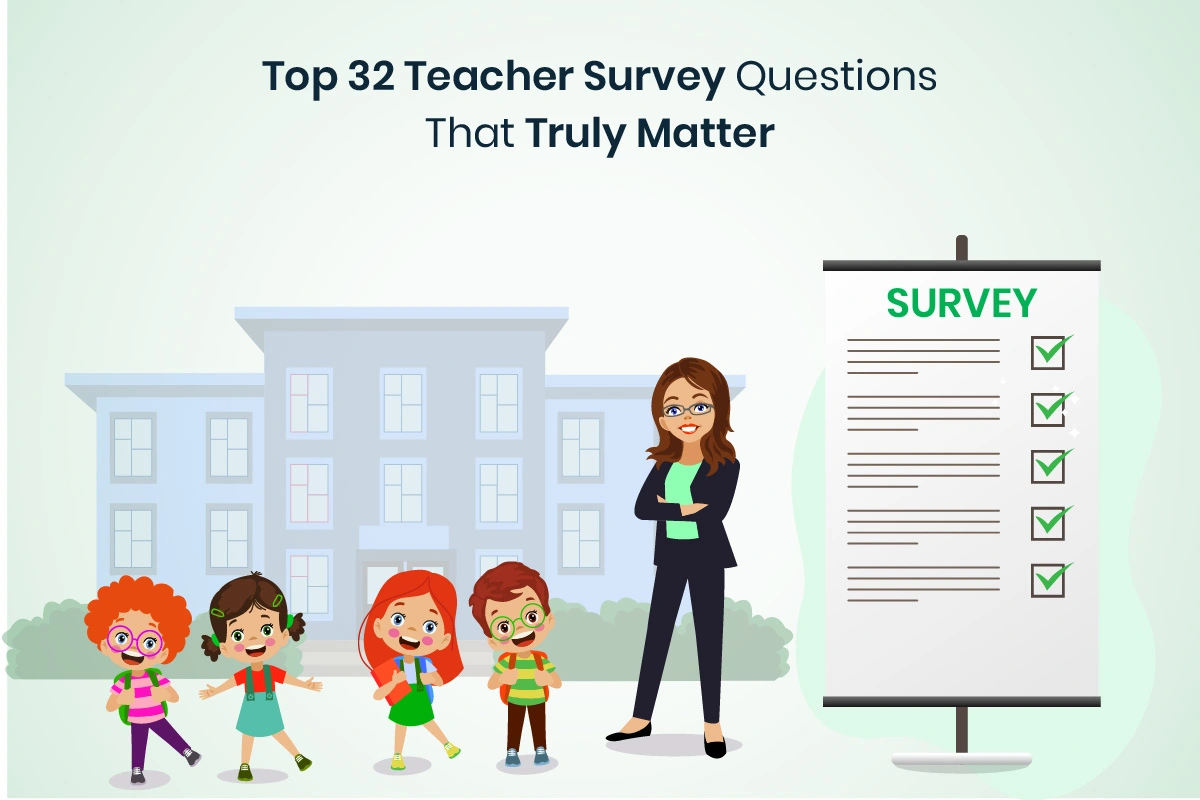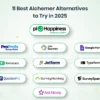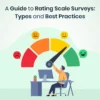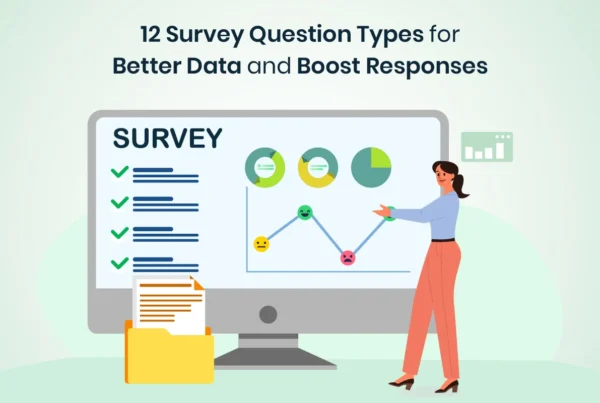In the education sector, teachers have a crucial role in shaping students’ future. But to keep improving teaching methods, classroom management, and student engagement, it’s critical to gather structured feedback. Teacher surveys are one of the best ways to get valuable insights. By asking the right Teacher Surveys Questions, educational institutions can make actionable strategies.
By gathering feedback from teachers, schools can focus on strengths and tackle challenges, thereby developing actionable strategies for improvement. A well-constructed teacher survey is an administrative task and a strategic listening tool that can illuminate the pathway to a more supportive, effective learning environment.
Why Do Teacher Surveys Matter?
Teacher surveys are more than just standard evaluation forms. These surveys give teachers, learners (students), and school management a formal platform to express their views and share perspectives. When done creatively, survey results can reveal the strengths and weaknesses of a school’s academic practices and uncover hidden issues.
Such questionnaires can be a powerful tool for schools that wish to assess the level of satisfaction, identify gaps in skills, leadership style, and the direction of institutional development over the long term. For teachers, these surveys become instruments for introspection and career advancement, whereas the administration staff can employ the information to help shape the policies and structures.
Crafting Effective Survey Questions
Effective survey questions are focused and aligned with the survey’s goals. They need to be clear and precise to avoid ambiguity and bias. Questions can be open-ended to gather qualitative data or closed-ended for quantitative analysis. A mix of both will give valuable data.
When creating the survey, consider whose views are being sought, whether teachers, students, or parents. For instance, 360-degree teacher feedback questions should tap into all sources of input for the optimal evaluation.
Categories of Questions to Include
For surveys to be significant, the questions should encompass a range of viewpoints. Institutions can do this ideally when they have sufficient resources to obtain quantitative data and qualitative data. Below are the main categories to include.
Classroom and Instructional Practices: Focus on teaching methodologies, student engagement, and lesson planning.
- How confident are you that you will be able to provide lessons that engage and benefit your students?
- To what extent do you utilize technology in your teaching for the enhancement of the learning process?
- Do students actively participate and have enough opportunity to ask questions throughout their classes?
- Which obstacles limit your ability to change your classes to meet curriculum expectations?
- How frequently do you use instructional techniques to satisfy your students’ varying needs?
- How sure are you regarding your capacity to exactly assess student development?
School Environment and Culture: Professional ties, communication, and access inclusiveness.
- Do you believe your school environment to be both protective and secure?
- How tolerant and inclusive is the school’s overall culture?
- Are decisions made with respect for teachers’ opinions?
- What level of safety and comfort do you feel in the school’s environment?
- Does the school promote collaboration among staff?
- Do you receive acknowledgment for your work accomplishments?
Professional Development: Understand opportunities for training, growth, and mentorship.
- The professional development programs at the school provide what level of usefulness to you?
- What aspects of professional development do you want to focus on primarily?
- Professional development workshops deliver what percentage of your anticipated outcomes?
- How often do you apply knowledge obtained from professional development training in your classroom instruction?
- What barriers stop you from participating in professional development initiatives?
- The level of support you receive for your ongoing professional learning activities.
These questions deal with the growth of teachers and align with the best practices of Staff Survey Questions. They ensure that the schools are asking the right questions to identify the support and development gaps that exist among their employees.
Leadership and Administration: Assess communication, support, and decision-making effectiveness.
- Rate͏ the overall communication͏ between staff and school leadership͏?
- To what extent do you feel valued by school administration support, and supported?
- How collaborative is the work environment between teachers and staff?
- What can be done to improve the sense of community in the school?
- How effectively does school leadership address teacher concerns?
- How much do you think the school notices and appreciates what you contribute?
Student Experience and Engagement: Gauge how students perceive classroom dynamics and learning outcomes.
- Do students appear to be motivated to participate in class activities?
- How effective are your teaching strategies to improve students’ results?
- Do students show clear understanding of lesson objectives?
- How well do you address students’ emotional needs?
- Do you think your students develop critical thinking capabilities?
- How often do you customize your teaching to meet different students?
- Do you get a useful response from the students about your teaching?
- How satisfied are you with the level of overall student engagement?
How to Structure Teacher Surveys?
To create an effective survey, the critical factor is the structure. Keep the survey short in length and use a mix of rank scales, choice lists, and open-ended questions. For example, 1 to 5 scales are quick to mark and view. Open-ended questions will let them express their opinions without hesitation. When drafting Academic Survey Questions, aim for clarity and neutrality. Avoid the tone of ambiguous language.
Best Practices for Implementing Teacher Surveys
To ensure that teacher surveys are effective, the following best practices should be implemented:
Maintain Anonymity: Teachers are more likely to provide constructive feedback if they are assured that their identities will remain confidential, particularly concerning school leadership feedback.
Mix The Question Types: It is essential to combine closed questions and open-ended questions. Welcome diverse perspectives through open-ended questions while analyzing the quantitative findings from closed questions, including the implementation of likert scale questions, for overarching patterns.
Do Not Overwhelm Teachers: Do not flood teachers with lengthy questionnaires and questions must be limited to save the time of teachers during working hours.
Highlight the Results: Teachers should be informed of the survey results, especially concerning the relevant feedback given. They need to be educated through rigorous feedback about what issues are going to be addressed and bring a sense of morality.
Regularly Conduct Survey: Conduct surveys annually to track the progress of the feedback and identify the changing trends.
Conclusion
Surveys go beyond gathering information and help to foster a culture of continuous improvement and collaboration within the education system. Utilizing the right set of Teacher Surveys Questions helps educational institutions to identify their strengths, discover hidden challenges, and assist educators in providing meaningful education.
These 32 questions span from classroom and leadership effectiveness to professional development capturing a wide range of strategies to help gain invaluable insights. Teacher surveys, when combined with purposeful implementation and open communication, form the bedrock for outstanding academic achievement and institutional development.








